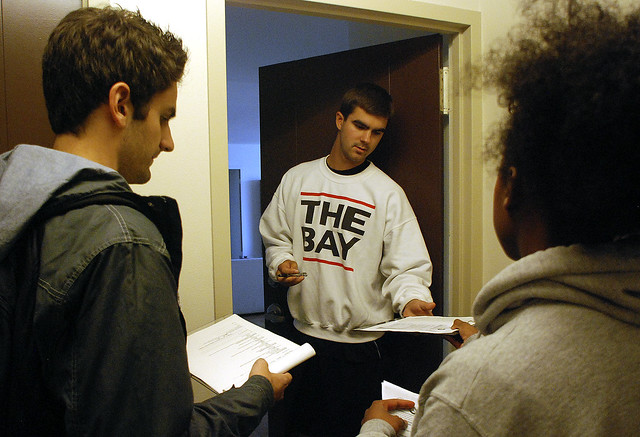
An act as small and seemingly insignificant as turning off the lights before leaving the house could have a bigger impact than students might think.
As a joint collaboration between California Public Interest Research Group and AmeriCorps, the CALPIRG Energy Service Corp is focused on getting students engaged, involved and educated about energy conservation, preservation and efficient energy use. The collaboration is in its first year at SF State and already has 43 members after arriving on campus more than a month ago.
“Energy is one of those issues that is getting swept under the rug because we don’t see the immediate effects of it,” Max Meltzer, campus organizer for CALPIRG, said. “But everyone uses energy. The best way to solve this is to reach out to future generation college kids. If we can reach one person and they can affect another person, it would help to have some positive impacts.”
With this being CALPIRG’s first year on campus, it’s still trying to get University recognition and gain more awareness of its presence on campus. CALPIRG representatives visit campus often to encourage student involvement through weekly tabling and have events planned for major holidays.
CALPIRG, which operates in 42 different states, is part of a large network of nonprofits called U.S. PIRG. Meltzer’s biggest goals include educating more than 3,000 school children in San Francisco about energy efficiency, how energy impacts the environment and how and why they should conserve energy.
“CALPIRG has its hand in issues that affect college students directly or indirectly,” Meltzer said. “Whether that be health care or lowering the cost of education, closing tax loopholes so more money goes into education. The energy service core is a joint collaboration.”
Professor Mark Starik, who taught courses about the role of energy in the world economy at George Washington University, proposed these courses at SF State early this semester – now offered through the College of Business – with Starik leading the class.
“This is a complex issue,” Starik said. “Forming an educated opinion and then taking an appropriate action, when the former often takes time and the latter often takes money, can be challenging.”
One negative consequence of wasting energy is the arctic ice shelf shrinking, according to Meltzer. He said the arctic ice shelf has reduced to half the size it was in 1980. Meltzer said arctic shelves are melting because the earth is warming, which has to do with global warming and is linked to over-consumption of nonrenewable energy like coal, oil and gas.
“As we continue to burn that dirty fuel, it sends pollution into the air and in turn, warms the earth, causing the ice shelves to melt,” Meltzer said.
CALPIRG hands out energy pledges to people that include some energy conservation tips such as turning down the heat or air conditioning, changing old light bulbs to compact fluorescent bulbs. CALPIRG also suggests plugging electronics into power strips and turning them off when not in use.
CALPIRG organizers emphasize how easy it is to save energy and that some of the smaller actions have the biggest impact.
“If every household in the U.S. just switched two of their regular light bulbs for two energy-efficient CFL bulbs, the amount of money that we would save on our electric bill would be equivalent to about $1.2 billion,” Meltzer said. “The amount of pollution that would be curbed would be as equivalent to taking over a million and a half cars off the road.”
Some students do what they can to conserve energy. Biology senior Albert Wong remembers a television show to remind him about saving energy.
“Whenever I leave a room, I think about this episode from MythBusters to turn off my lights,” Wong said.
Other students focus on the financial side of saving energy but are unaware of how simple it can be.
“It’s more about the electricity bill,” international relations major Taka Nagashima said. “For the most part, I’m not really conscious about it.”
Around Halloween, Meltzer and his team are thinking of doing a tabling event where they have facts that scare people into saving energy.
“We’re also going to have the options of students signing up for what we call a reverse trick-or-treat where we will go around with candy, knock on doors and give people candy in exchange for taking an energy pledge,” Meltzer said.
He also said CALPIRG has opportunities for students to sign up and help teach about energy in schools.
“We can learn more about renewable energy and support it when we can,” Starik said. “Purchasing affordable renewable products and services, encouraging businesses and other organizations to make similar purchases, and making community and civic decisions to encourage more investment in renewable energy development.”



